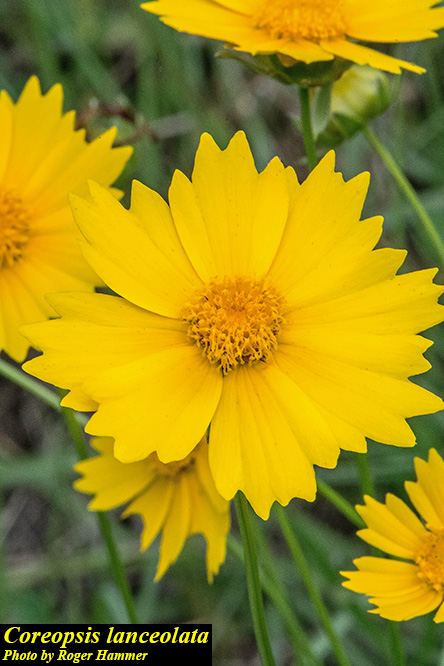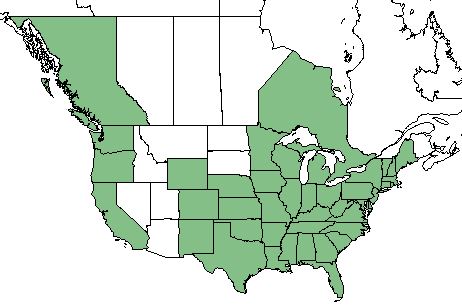Difference between revisions of "Coreopsis lanceolata"
(→Description) |
(→Distribution) |
||
| Line 27: | Line 27: | ||
==Distribution== | ==Distribution== | ||
| + | ''C. lanceolata'' is found throughout the United States apart from Arizona, Nevada, Idaho, Utah, Montana, North Dakota, and South Dakota. It is also found in Ontario and British Columbia.<ref name= "USDA"> [https://plants.usda.gov/core/profile?symbol=CEAM USDA Plant Database]</ref> | ||
| + | |||
==Ecology== | ==Ecology== | ||
===Habitat=== <!--Natural communities, human disturbed habitats, topography, hydrology, soils, light, fire regime requirements for removal of competition, etc.--> | ===Habitat=== <!--Natural communities, human disturbed habitats, topography, hydrology, soils, light, fire regime requirements for removal of competition, etc.--> | ||
Revision as of 19:21, 18 May 2018
| Coreopsis lanceolata | |
|---|---|

| |
| Photo by the Atlas of Florida Plants Database | |
| Scientific classification | |
| Kingdom: | Plantae |
| Division: | Magnoliophyta - Flowering plants |
| Class: | Magnoliopsida - Dicots |
| Order: | Asterales |
| Family: | Asteraceae |
| Genus: | Coreopsis |
| Species: | C. lanceolata |
| Binomial name | |
| Coreopsis lanceolata L. | |

| |
| Natural range of Coreopsis lanceolata from USDA NRCS Plants Database. | |
Contents
Taxonomic Notes
Synonym: C. crassifolia
Variety: none
Description
C. lanceolata is a perennial forb/herb of the Asteraceae family native to North America.
Distribution
C. lanceolata is found throughout the United States apart from Arizona, Nevada, Idaho, Utah, Montana, North Dakota, and South Dakota. It is also found in Ontario and British Columbia.[1]